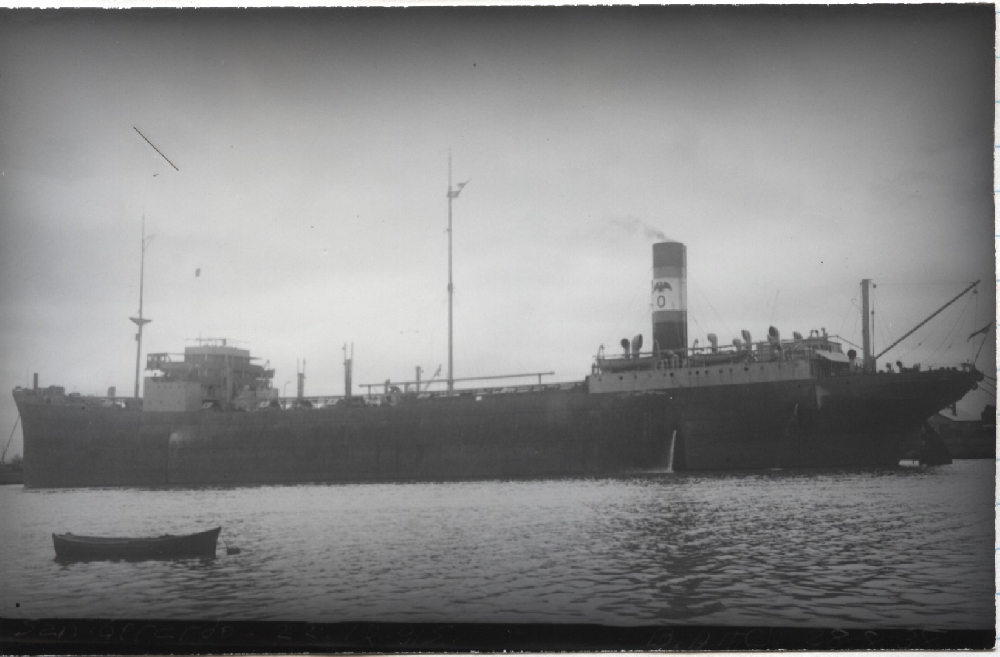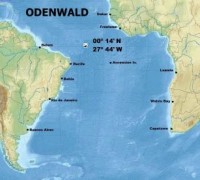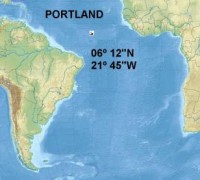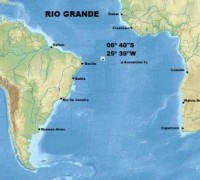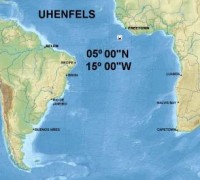- BLOCKADEBRECHER
17)OLINDA (SCUTTLED)
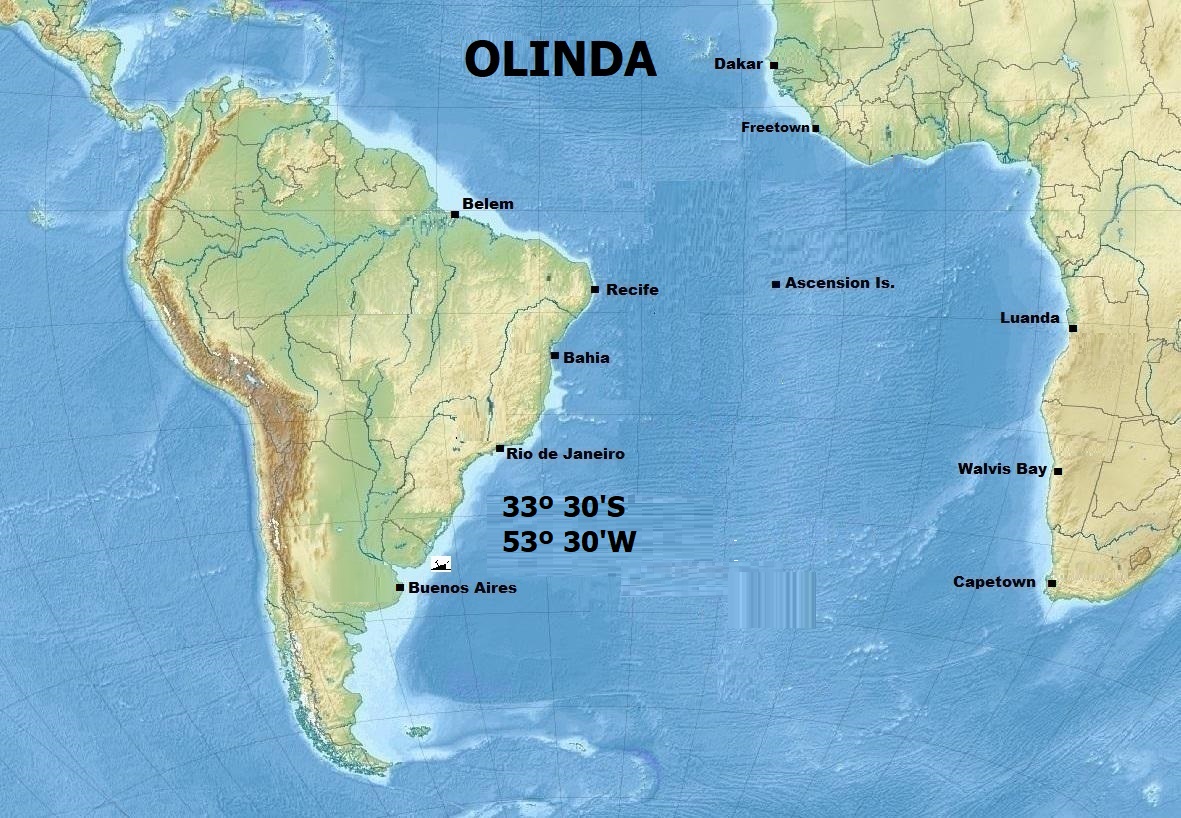
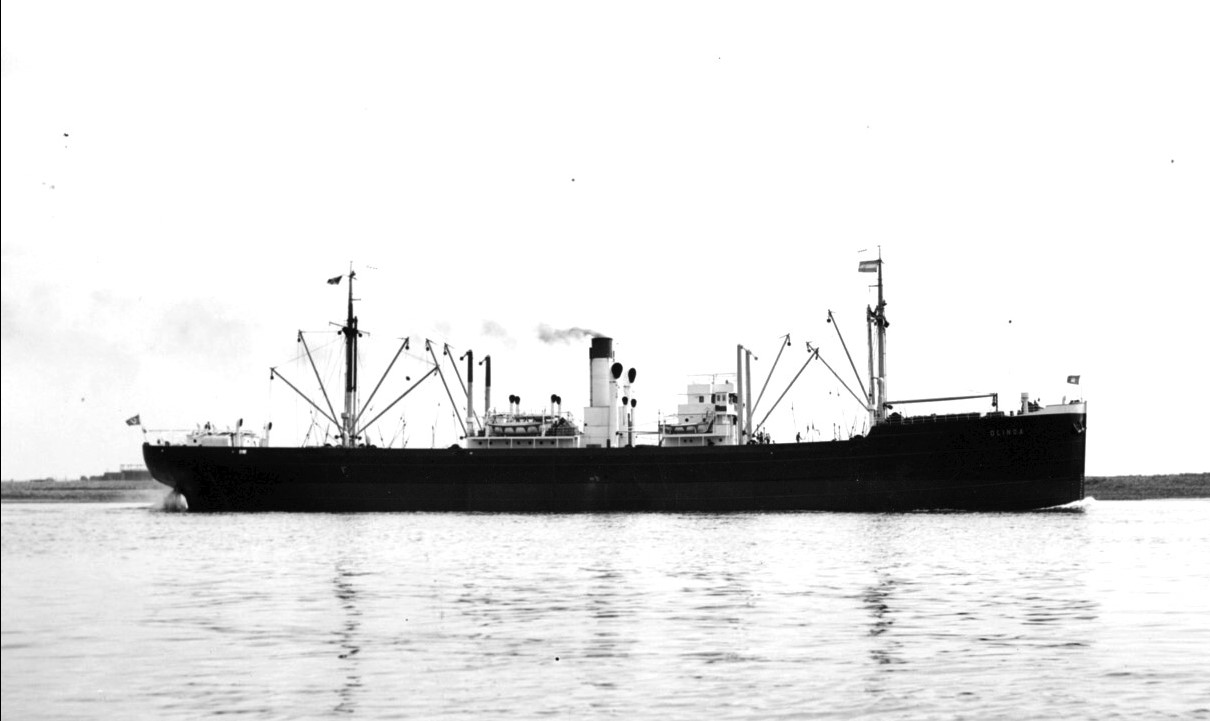
Photo. https://www.panzerschiffadmiralgrafspee.de/lagefeststellung-lagebeurteilung-und-entschluss/
Built: 1927
Tonnage: 4,576 / 7,052 dwt
Length 349,5 ft.
Beam 50,4 ft.
Draught 23,7 ft
Speed 10.5 kts
Cargo: Wool, woods, scrap iron, cotton, and hides.
Scuttled/Shelled 3 SEP 39 on pos. 33º 30’S 53º 30’W. to avoid capture by RN Cruiser HMS Ajax.
0 Dead
42 survivors released at Montevideo.
The first German merchant ship to be lost to enemy action in World War II was the SS Olinda of Hamburg Süd. According to the captain's report, the ship left the port of Buenos Aires on August 29, 1939 at 20:00 with about 100,000 cubic feet of clearance. The following day at 12:00 o'clock Montevideo was reached and the loading of scrap iron, hides, wool and other things began immediately. Captain Schneekloth had orders to remove as much fuel as possible and start the journey home.
Until 2 september at 17:00 the ship was loaded, then everything was on board. However, part of the landing had been withdrawn by the shippers. 364 tons of coal were also taken over. At 7:30 p.m. local time, the German news had been heard and it contained nothing of importance, and the captain had not been given any new instructions by the German legation, and the Olinda left the port of Montevideo at 8:00 P.M. A course was set which led north of the English bank to a point twenty nautical miles pointing south of Lobos island. This point was reached around 04:00 in the morning of September 3rd. Now it was steered to the east. Around this time an east-southeast wind was blowing in force 4 to 5. There was a turbulent sea.
At about 10:00 a.m. At around 10:00 a.m. a war vessel was sighted about three points ahead on the port side. Since escape was no longer possible, the course and speed were maintained. When the ship, which was identified as an English warship, had approached the Olinda to within about two nautical miles, she turned over and raised the signal Show your national flag and distinctive signals. That was also done. Until then, no one on the Olinda knew that war had broken out between Germany and Great Britain. The Olinda had been made unrecognizable because the white chimney with the red top of the Hamburg-Sud was painted yellow during the night and the name on the bow was painted over. Another name couldn't be painted yet because the ship was pitching heavily and the people couldn't stay on the shelf.
Now the Englishman signaled Stop! I launched a boat. The Olinda then stopped. The cruiser Ajax launched two boats and approached the Olinda. Assuming that perhaps war had already broken out, Captain Schneeklot gave the radio officer the instruction to immediately radio with all his energy: To everyone at DHLK: I am stopped by an enemy cruiser about 60 nautical miles from Cape Polonio. The radio officer managed to radio this message a few times. The Ajax now fired a shot that narrowly missed the bow of the Olinda and landed about two hundred meters from the ship. He gave the signal to stop. Meanwhile an English Officer came with sixteen armed soldiers in two boats.
The Officer came immediately to the bridge and said to the captain. I am sorry but I have the order to seize the bridge. Captain Schneekloth asked back to that. On what grounds? The Officer asked a counter question as to weather the Captan didn't know that war had broken out between Germany and England in the meantime, and that he now answered this question in negative. The Cruiser now steered different courses and asked the Olinda to follow him. From the signal traffic between the English of the Olinda was on him Captain Schneekloth could know that the Olinda was to be taken either to Trinidad or to the Falklands Islands. After neither signal was given about the cargo, the order came to sink the ship as soon as the people had packed their things.
The prize regulations contained one paragraph that stated that a ship may not be captured if the Captain of the ship in question does not know about the state of war. If she is sunk anyway it must be paid for. Shortly after 12 PM, the crew went into the boats with their effects, while everyone was able to get in a hurry. The Captain went with the prize officer, the Chief and Second Engineer into the engine room where they opened the sea valves and smashed the condenser. The water flowed heavily into the engine room. The crewrowed over to the British warship in the ship's two boats. After everyone had left the ship the Ajax fired at least a dozen shots at the Olinda, which sank very slowly. This must have been at 33º 30'S, and 53º 30W, around 04 PM. At around 06:00 PM the Olinda crew was picked up with a small part of their luggage in the boats of the British tanker San Gerardo (12,195 GRT)
On board the Ajax the entire crew was required to sign a document stating that they would not undertaken any hostile action against England and its allies in this war. Everyone signed the document. Most of the luggage remained on board of the Ajax. The Commander promised Captain Schneelkloth that he would deliver the effects that were left behind to the nearest German consulate. At noon on Sep 4th, the crew landed in Montevideo and was taken by the Hamburg-Sud agency. They were temporarily accomodated at Hotel Globo. None of the crew suffered any pernonal injuries. The one for the crew Dutch stoker T. During and Hungarian sailor J Farkas were sent back to Germany as passengers. According to a report from the Hamburg-Sud agency in Montevideo, the Olinda secret resources were destroyed in good time. The radio station was part of the prescribed.
A court martial was established and found that Capitain Schneekloth acted correctly. There was also no objection to the signing of the document from the part of the crew. If they did not obey they would probably be sent to a priso camp at Falklands from where a escape would be impossible. After returning to Germany they would still had the opportunity to serve in the Merchant ships. The court martial was also surprised that that the English prize officer had gone into the engine room and observed the preparations to sink the Olinda. As the stoker Paul Tomat, who returned to Germany, the Olinda was sunk after 28 artillery shots and final one torpedo. The German crew would have had to stay on the deck of the cruiser to watch the sinking however they rather turned back.
Some crewmembers found jobs in Montevideo, while others returned home in German ships and four were later taken prisoners by the British. Captain Schneekloth received a 3rd class ticket tto return in SS Neptunia while other received no support from German Consul. By the part of the Ajax captain, he kept his promise and all personal belongings of the crew were delivered to the German consulate at Montevideo.
